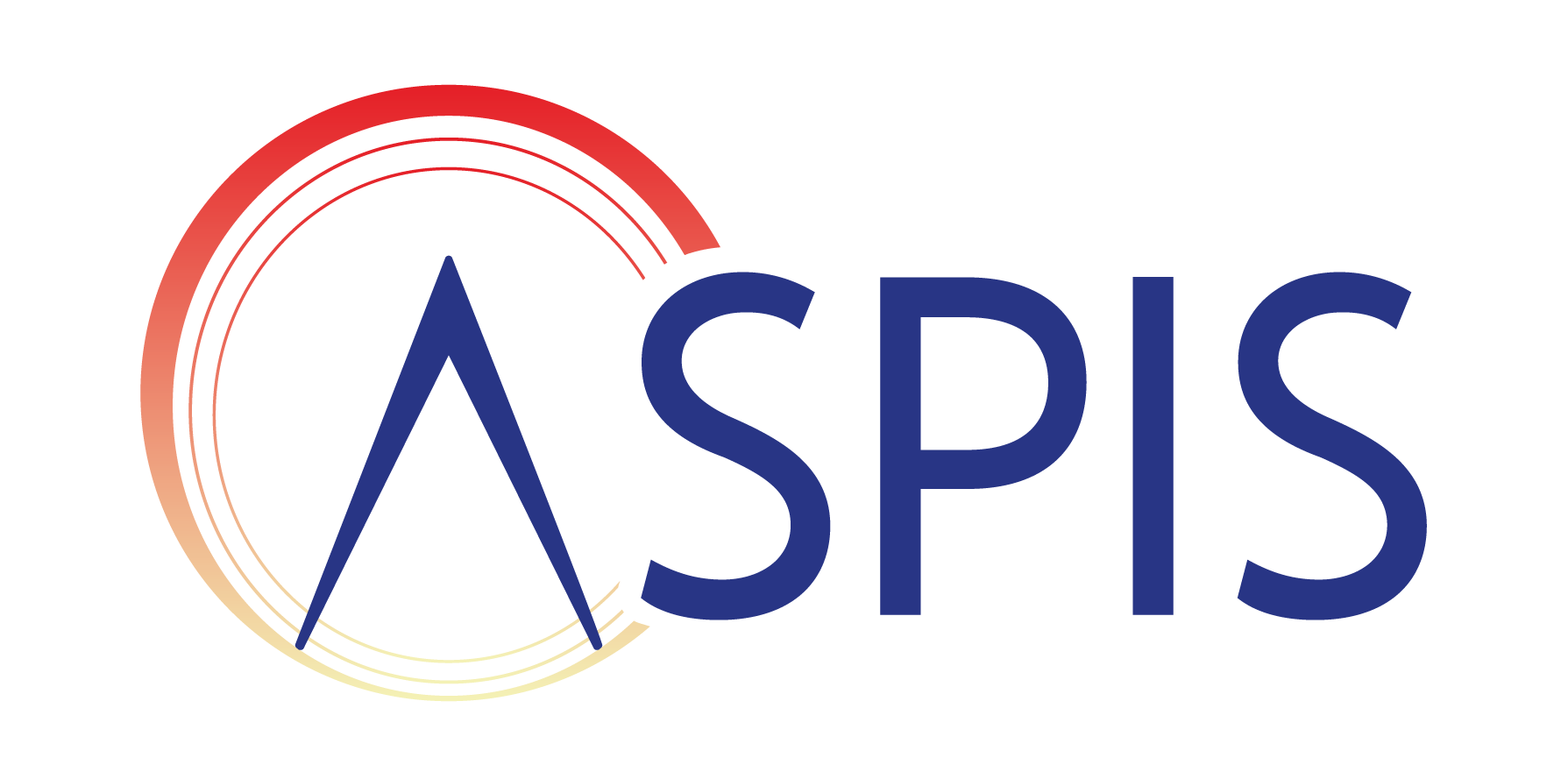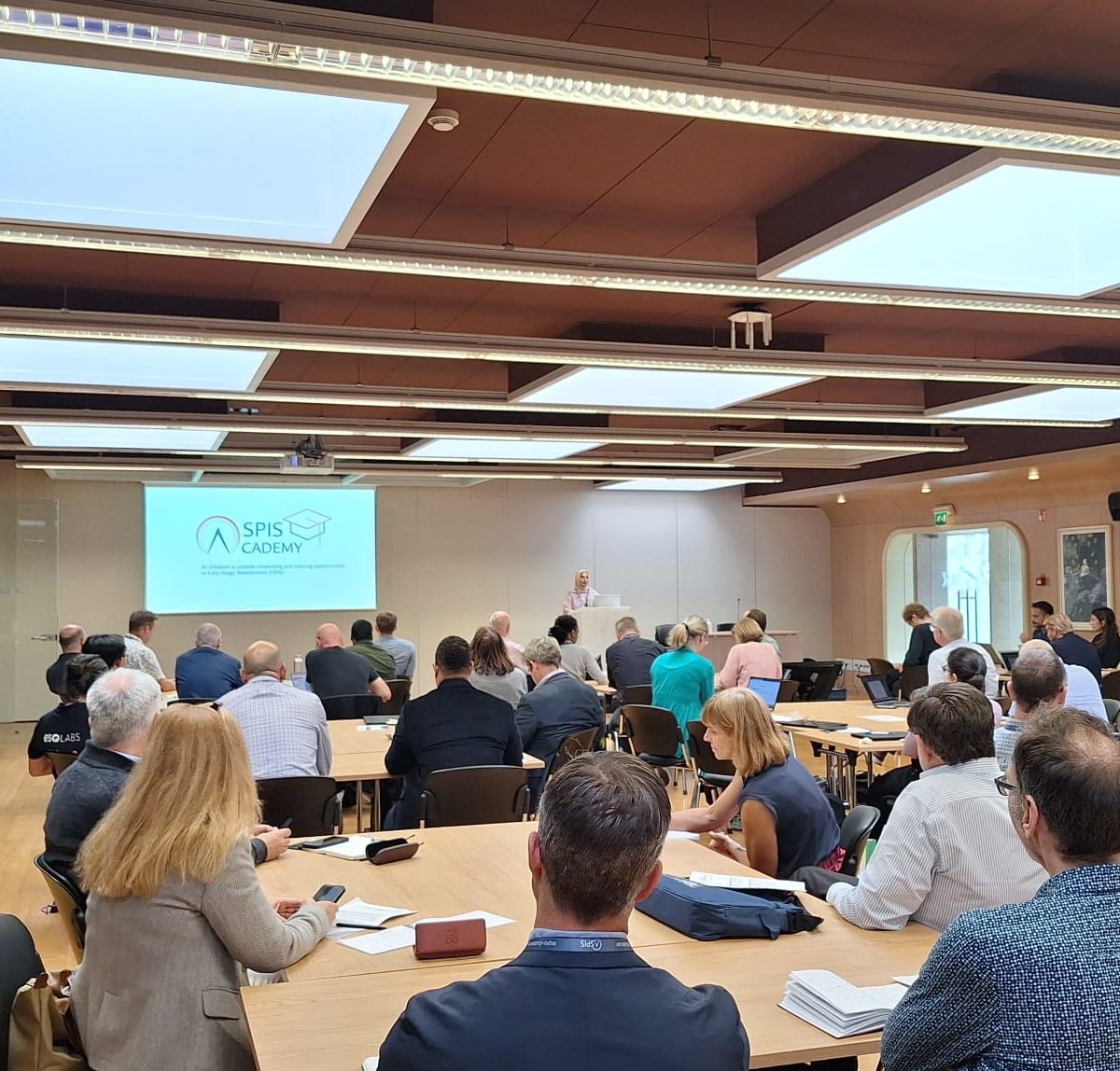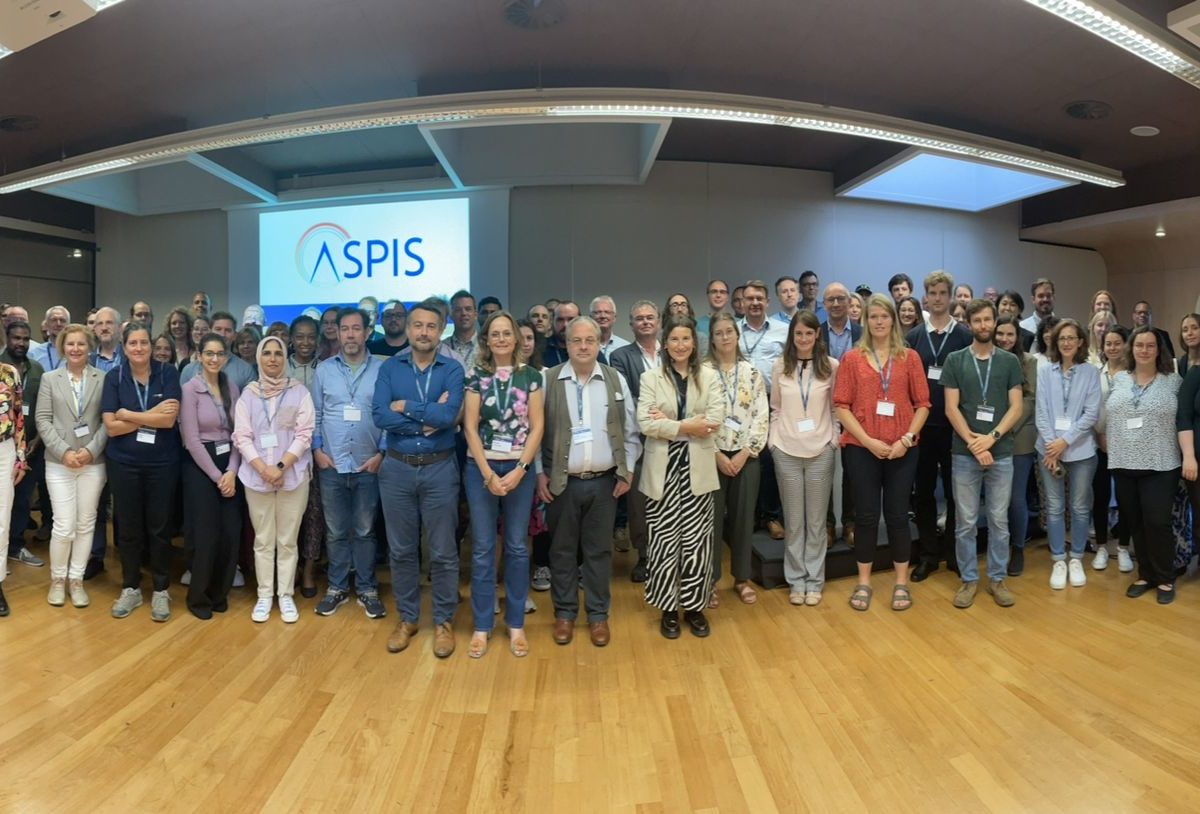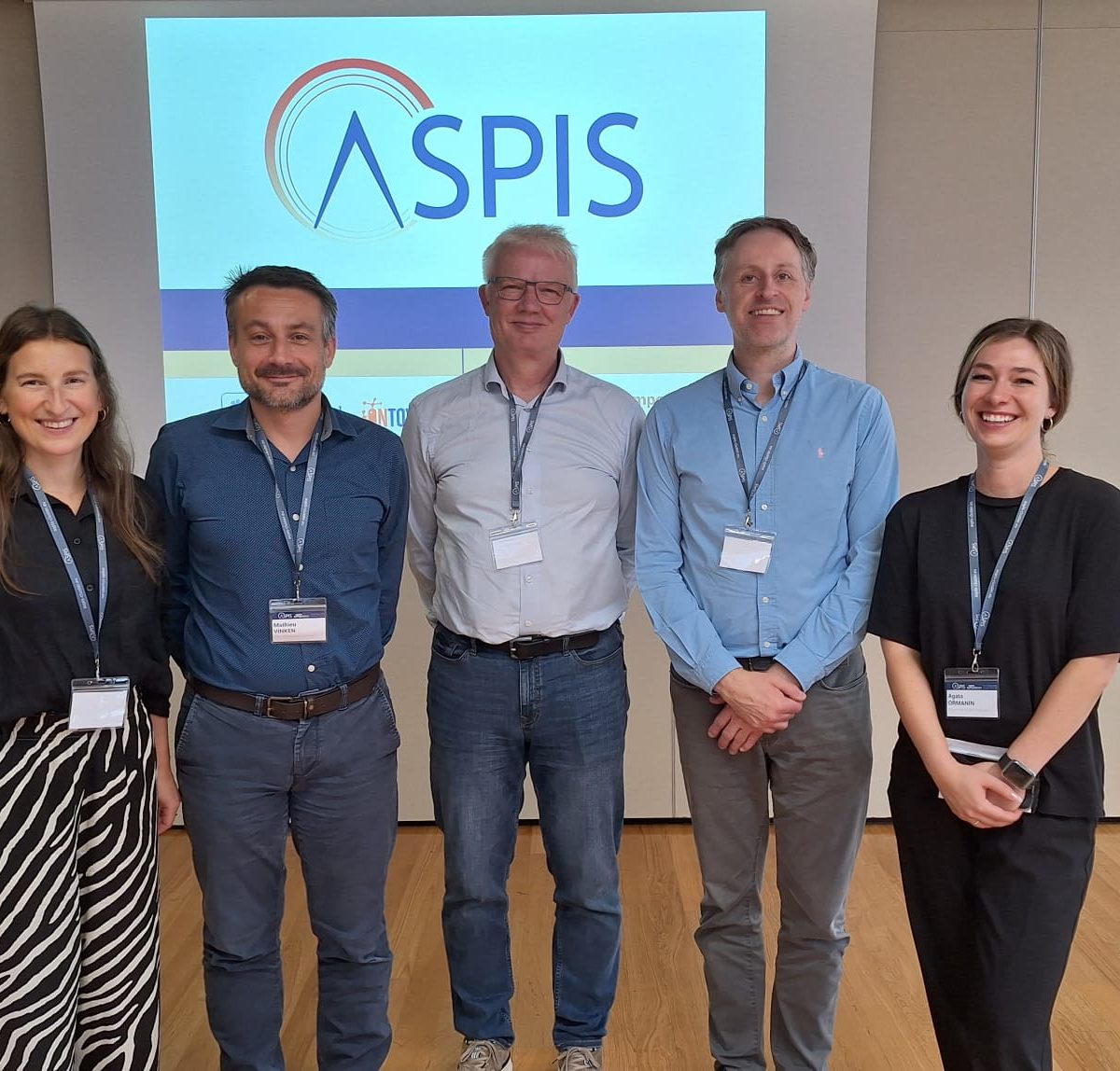ASPIS scientists attended the EUROTOX Congress on 10-13 September and the ASPIS Open Symposium on 14-15 September. Both events took place in Ljubljana, Slovenia.
During the EUROTOX 2023, the ASPIS cluster manned booth No 65. Here, ASPIS scientists, including the young ones, presented the cluster’s mission and their dedication to the implementation of New Approach Methodologies (NAMs).
The ASPIS Open Symposium started right away after the EUROTOX Congress ended. John Colbourne (PrecisionTox, ASPIS Cluster Coordinator for 2023 – 2024) opened the third edition of the ASPIS Symposium.
The symposium updated participants on the latest work of the ASPIS cluster, formed by three Horizon 2020 consortia (ONTOX, PrecisionTox, RISK-HUNT3R), focused on implementing NAMs for chemical risk assessment.
Day 1 of the ASPIS Open Symposium
The dense programme covered many interesting topics, presented by outstanding experts, including:
- Robert Lee (Michabo Health Science; PrecisionTox) – Socio-technical barriers to the uptake of NAMs in chemical risk assessment
- Jonathan Freedman (ASPIS Working Group Coordinator; PrecisionTox) – ASPIS Working Group updates
- Barira Islam (CERTARA; RISK-HUNT3R) – ASPIS Academy
- Mirjam Luijten (National Institute for Public Health and the Environment RIVM; RISK-HUNT3R) – ASPIS Safety Profiling Algorithm (ASPA)
- Thomas Hartung (Johns Hopkins Bloomberg School of Public Health; ONTOX) – Probabilistic Risk Assessment
- Olivia Osborne (UK Food Standards Agency) – The “new normal” chemical landscape
- Richard Currie (Syngenta; PrecisionTox Scientific Advisory Board) – Practical application of NAMs for the benefit of industry and the environment
- Thomas Dickmeis (Karlsruhe Institute of Technology; PrecisionTox) – Comparative toxicology to evaluate both human and environmental hazards – a first view of One Health Toxicology
Three young ASPIS scientists had the chance to introduce their outstanding work during the selected flash talk poster presentations:
- Job Berkhout (RIVM National Institute for Public Health and the Environment; ONTOX) presented poster “Towards a virtual embryo: Computational modelling of neural tube closure defects”;
- Nathan Keith (Indiana University; PrecisionTox) analysed his work in “Identification of between-species shared and divergent pathway responses upon chemical exposure”;
- Tamara Danilyuk (Leiden University; RISK-HUNT3R) explained her effort in “Human-induced pluripotent stem cell reporters for high-content screening of stress response activation identifying target organ-specific toxicities”.
Day 1 ended with a compelling poster session showcasing the ASPIS Working Groups and Early Stage Researchers’ efforts.
Day 2 of the ASPIS Open Symposium
On Day 2, the meeting was closed to the ASPIS cluster members. Its objective was to discuss and learn how to proceed with ASPIS’s mission towards sustainable, animal-free, and reliable chemical risk assessment.
During the dedicated session, Julia Malinowska (Joint Research Centre, European Commission) facilitated open discussion among ASPIS researchers and regulators on why standardisation is required and how this may be applied to NAMs in chemical safety assessment.
Afterwards, ASPIS Coordinators, Project Managers, Working Group Chairs, and Scientific and Regulatory Board Members had separate meetings to think and plan how to overcome obstacles and strategise forthcoming ASPIS assignments.
ASPIS Academy
During the ASPIS Open Symposium, young scientists had a splendid opportunity to network, learn and discuss their future collaborations using NAMs for chemical risk assessment. This was due to the ASPIS Academy, the initiative that promotes ASPIS Early Stage Researchers’ professional growth and development. Subsequently, young researchers had the unique opportunity to master their skills in grant writing training led by Elisabeth Andrews (Academic Leadership Coach). During this session, young researchers learned how to tackle common hurdles that divide them from a successful grant proposal submission.
ASPIS Best Poster Award for Anouk Verhoeven
One exceptional young researcher was granted the ASPIS Best Poster Award. The award went to Anouk Verhoeven, ONTOX PhD Researcher at Vrije Universiteit Brussel. Her winnings were due to the excellent poster entitled “An updated adverse outcome pathway network on chemical-induced liver steatosis”. This endeavour identifies data and knowledge gaps, advancing predictive non-animal approaches for modern human risk assessment. Anouk’s effort was rewarded by the European Society of Toxicology in Vitro (ESTIV) with an ESTIV 2024 Congress Bursary. ESTIV Congress 2024 will occur from 3 to 6 June 2024 in Prague, Czech Republic.
The ASPIS Open Symposium was a success
Many fruitful discussions occurred during the event, and they laid the ground for the extensive work on establishing a Next Generation Risk Assessment framework based on NAMs. As remarked one of the attendants, Nicolas Roth (Swiss Centre for Applied Human Toxicology, SCAHT): “Exciting to learn more about NAMs for regulatory use at the third ASPIS Open Symposium in Ljubljana. Great opportunities for networking and improving the European Partnership for the Assessment of Risks from Chemicals (PARC)-ASPIS interaction. Feel the pulse of this amazing like-minded community!”
The next ASPIS Open Symposium will be organised in 2024.







